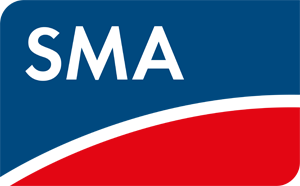‘The Circle of Trust’
With our decades of experience, we have worked closely with various inverter manufacturers in the solar industry. Below is our curated ‘inner circle’ of trusted inverter manufacturers. These are brands that we confidently recommend for residential and commercial installations. Some may come at a premium price point, but each of these inverters within our ‘circle of trust’ is reliable and backed by our expertise. For a comprehensive solar inverter guide, exploring the options from these reputable manufacturers will ensure a reliable and efficient choice for your solar system
Please click on any manufacturer’s logo to be taken to a page with more specific details on that manufacturer.
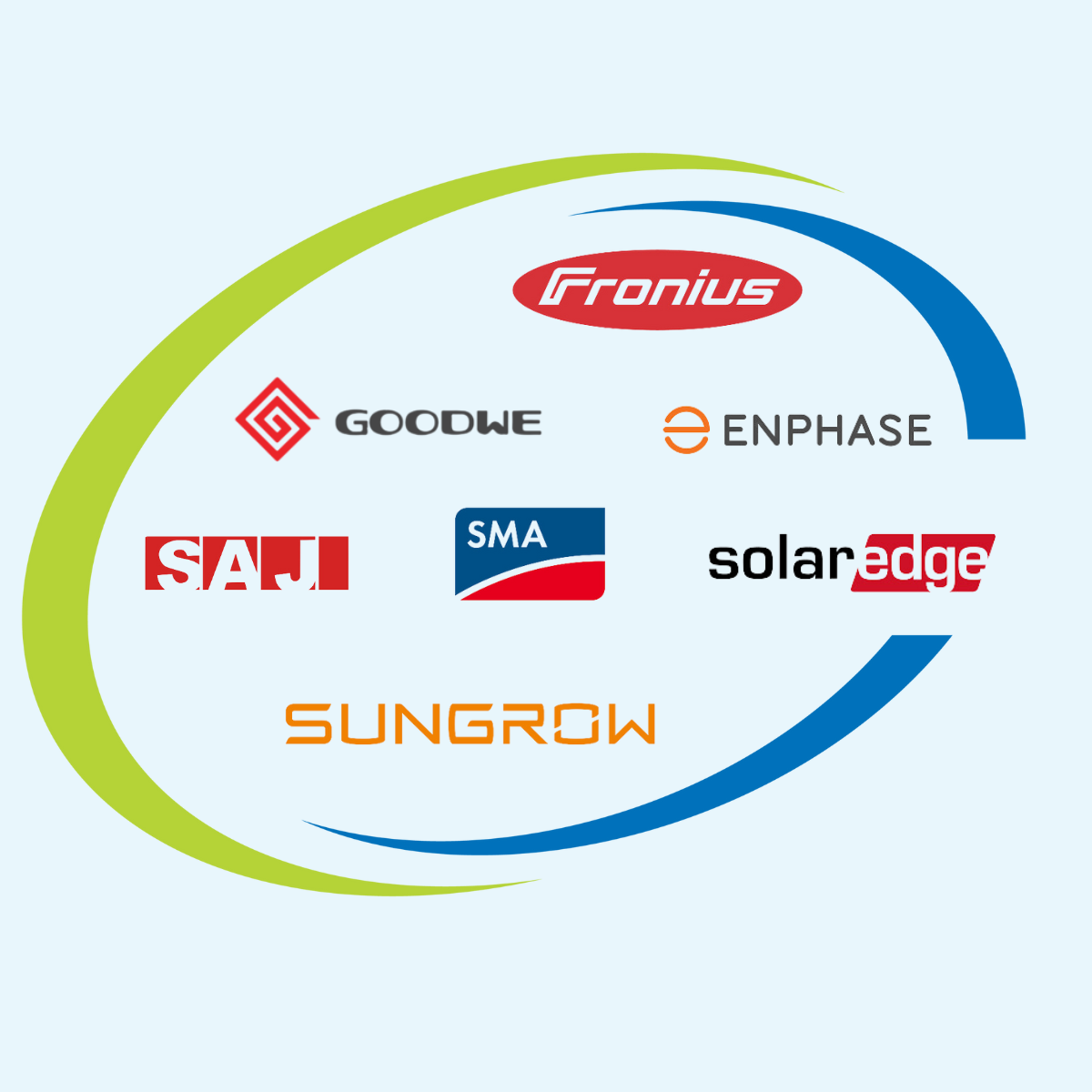
Choosing the Right Inverter for Your Solar Needs
Selecting the correct inverter is a crucial decision in any solar energy system. In Australia, where solar power is thriving, it becomes even more vital to understand the different types of inverters available in the market and their suitability for specific needs. Let’s delve into the various types, benefits, and considerations associated with each. This solar inverter guide will provide insights into choosing the right inverter for maximising the performance and efficiency of your solar energy system:
1. String Inverters
String inverters are the most commonly used inverters in Australian residential and commercial installations. They work by converting the output of multiple solar panels (connected in a series or “string”) into usable electricity. Below image demonstrates a string inverter with two MPPT (Multi Point Power Trackers) Under normal condition, all panels within the same string should ideally face the same direction and have the same tilt angle to optimise performance.
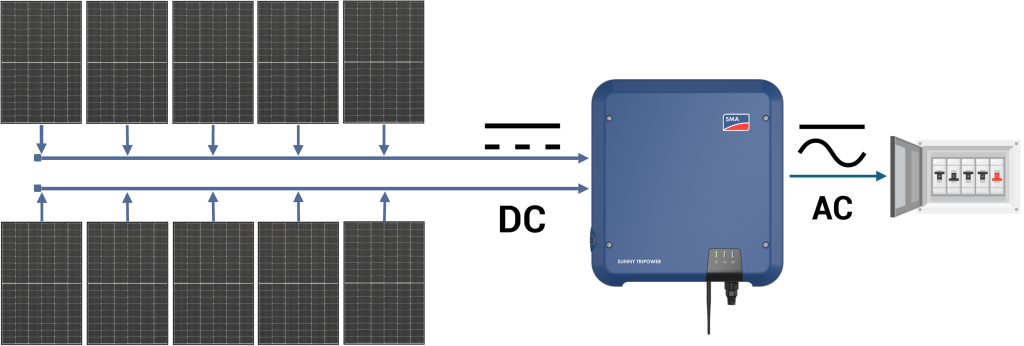
Key benefits of string inverters include:
- Cost-Effectiveness: String inverters are typically the most affordable option, making them ideal for those on a tight budget.
- Reliability: String inverters are known for their reliability and durability. They are designed to withstand various environmental conditions and typically come with robust warranties, providing peace of mind to users
- Compatibility: String inverters are compatible with most solar panels, making them widely accessible.
- Standardisation: String inverters are widely standardised in the solar industry, making them a popular and well-understood choice for installers and users alike. This standardisation contributes to easier maintenance and servicing of solar systems.
However, there are some cons to consider:
- Performance Dependency: The overall performance of the entire system is dependent on the weakest panel in the string. If one panel is partially shaded or malfunctioning, it can impact the output of the entire string.
- Limited Monitoring: String inverters often have limited monitoring capabilities, making it challenging to detect and troubleshoot individual panel issues.
2. Optimised Inverters
SolarEdge inverters are engineered for full panel optimisation, with each solar panel equipped with a dedicated power optimiser. This innovative setup enables every panel to operate at its maximum capacity independently, ensuring optimal performance without being constrained by the output of less productive panels in the array..
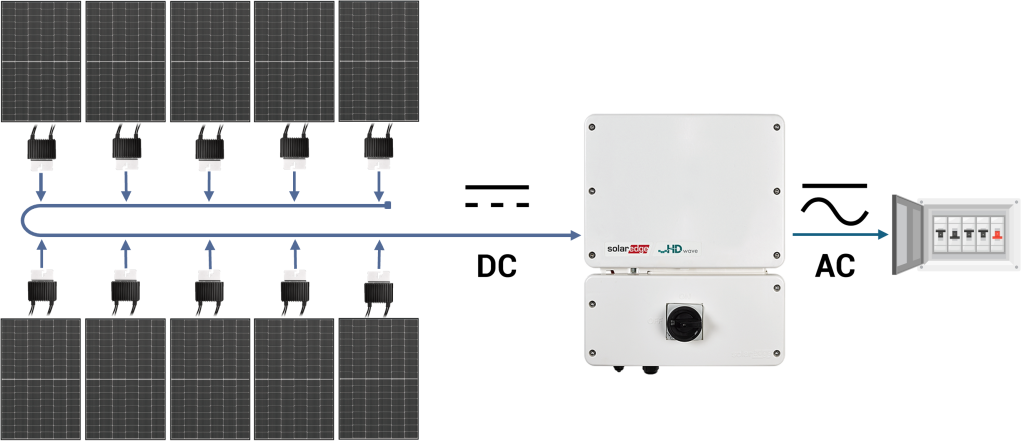
The SolarEdge system offers several key benefits:
- Maximum Energy Production: Each panel operates at its peak efficiency, maximising energy harvest even in partially shaded or mismatched conditions.
- Enhanced Safety: Power optimisers reduce panel voltage during inactive periods or emergencies, improving safety for installers and maintenance personnel.
- Individual Panel Monitoring: Detailed monitoring at the panel level allows for quick identification of performance issues, optimizing system maintenance and uptime.
- Flexibility in Design: The system accommodates various roof orientations and shading conditions, providing flexibility in system layout and installation.
- Reliability and Longevity: Power optimisers enhance overall system reliability and longevity by minimising performance degradation and ensuring consistent output.
These benefits collectively contribute to higher energy yields, improved safety, and enhanced system performance for SolarEdge installations.
3. String Inverter with Partial Optimisation
A string inverter can achieve some of the benefits of panel-level optimisation by integrating a retrofit solution like Tigo’s optimisers. These optimisers can be installed partially or across the entire array, providing a solution to optimise individual panels, especially those affected by shading during certain times of the day. This approach enhances energy production efficiency and performance, even with a conventional string inverter setup
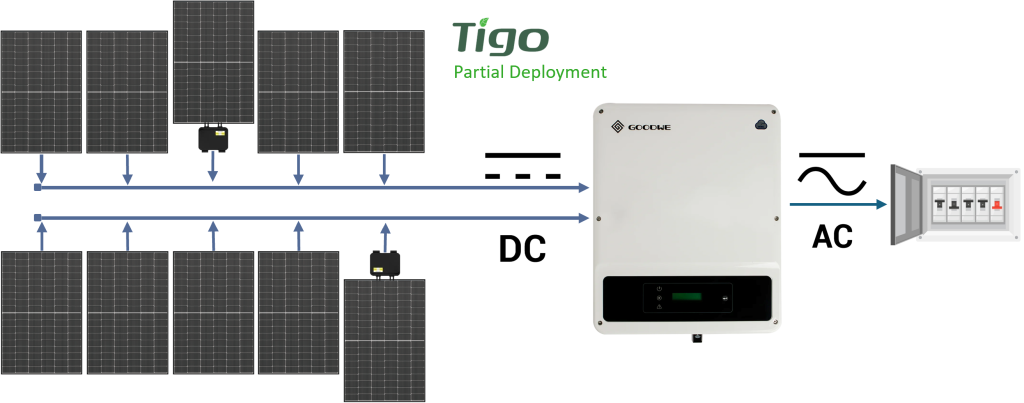
4. Microinverters
Microinverters are another popular choice in Australia, particularly in situations where shading or panel-level monitoring is essential. Unlike string inverters, microinverters are installed on each solar panel, converting direct current (DC) to alternating current (AC) at the panel level. Here’s what you need to know about microinverters:

- Panel-Level Performance: With microinverters, the performance of each panel is independent of others, as they function individually. This eliminates the issue of reduced output due to shading or panel issues.
- Enhanced Monitoring: Microinverters offer advanced monitoring capabilities, enabling real-time tracking of each panel’s performance. This feature simplifies troubleshooting and maintenance.
Keep in mind the following drawbacks of microinverters:
- Higher Cost: Microinverters are relatively more expensive than string inverters due to the need for multiple units.
- Installation Complexity: Since each panel requires a dedicated microinverter, the installation process may be more complex and time-consuming.
5. Hybrid Inverters
Hybrid inverters not only convert DC power from solar panels into AC power but also incorporate built-in battery management capabilities. This feature allows hybrid inverters to control the charging and discharging of compatible batteries.
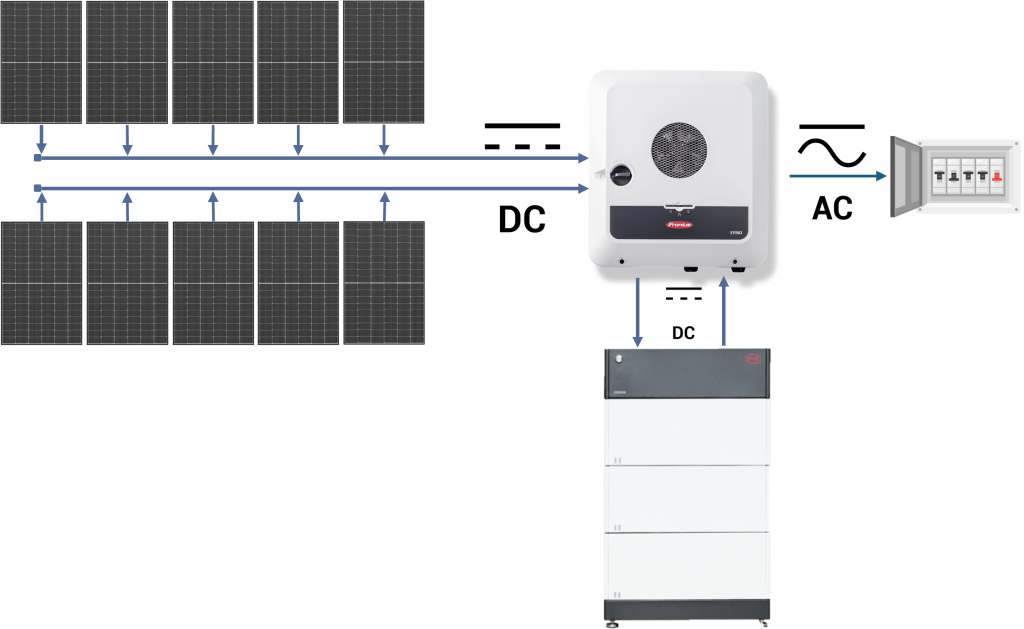
Here are some key points to consider when it comes to hybrid inverters:
- Stored Solar Power: Optimal utilisation of solar energy, as excess electricity is stored in batteries for later use.
- Additional Solar Panels: Provided you add a battery, many hybrids allow for additional PV (solar panels) to help maximise inverter output and battery charging.
- Back up Power: During power outages, a hybrid inverter with a battery can provide backup power. They can automatically switch to battery backup, ensuring critical systems remain operational.
- Advanced energy management: Hybrid inverters often come equipped with advanced energy management systems that allow users to monitor and optimise their energy consumption. With the help of integrated smart meters and user-friendly interfaces, individuals can easily track their energy usage patterns, make informed energy-saving decisions, and even participate in demand-response programs.
- Scalability: Hybrid inverters offer scalability, allowing users to add more batteries to their system as their energy needs grow.
- Long term benefits: While hybrid inverters may have a higher upfront cost compared to traditional inverters, they provide long-term cost benefits. By maximising self-consumption and reducing reliance on the grid.
Keep in mind the following drawbacks of hybrid inverters:
- Hybrids are more expensive than a standard inverter.
- If you don’t purchase a battery at the beginning and return to buy a battery a number of years later, there is a risk the hybrid could be obsolete relative to new battery options. Battery technology is moving quickly.
To find out more about HYBRID INVERTERS, please go to our solar battery guide page


